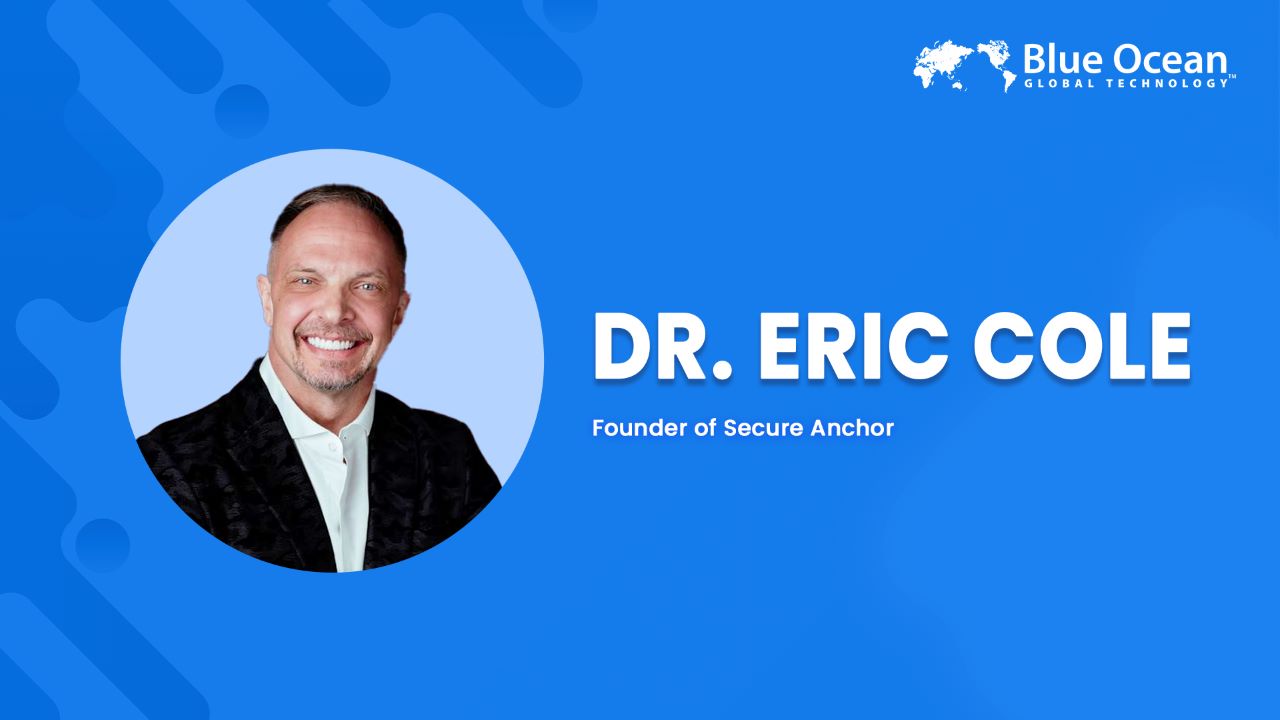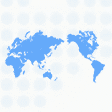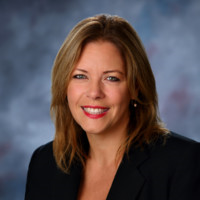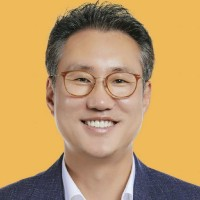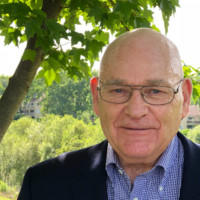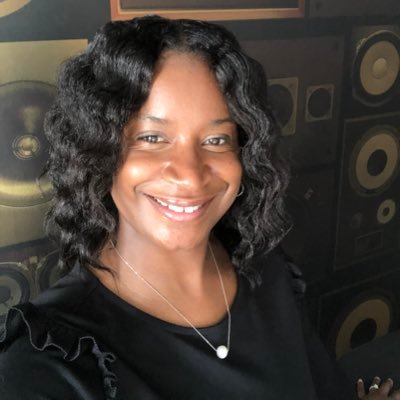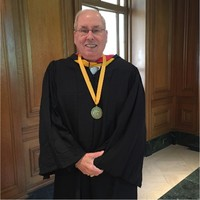About Dr. Eric Cole
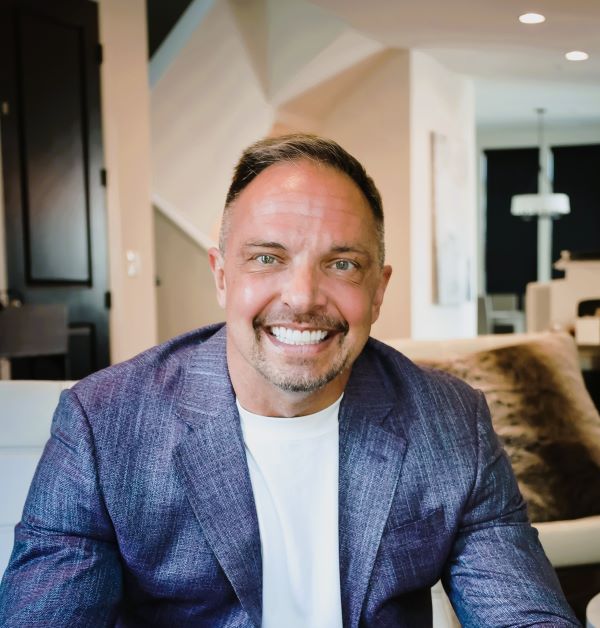
Dr. Eric Cole is a renowned cybersecurity expert, entrepreneur, and best-selling author with over 30 years of industry experience. Known for his work in advancing cybersecurity and his dedication to making the digital world a safer place, Dr. Cole has a unique background that includes working as a professional hacker for the CIA to advise some of the world’s top companies.
As America’s Cybersecurity Czar, Dr. Cole’s life mission is clear: to make cyberspace a safe place to work and do business in. While he started his career on the offense, he is now fully dedicated to understanding the adversary so he can provide cost-effective solutions and help businesses implement smarter and safer processes. As a pioneer in the area of cybersecurity, he has been inducted into the Infosec Hall of Fame, and awarded the Cyber Wingman Award from the US Air Force. He has also received multiple accommodations from the CIA, and was part of the commission on cybersecurity for President Obama. He has been the featured speaker at many security events and is an in-demand expert for national media outlets such as CNN, CBS News, FOX News and 60 Minutes.
What initially drew you to this field and what continues to fuel your passion for doing it?
Back in high school during the ’80s, I was fascinated by how things worked-architecture, structures, systems. A family friend suggested I look into a new field called computer science. He said, “Everything’s going to run on computers, and with that degree, you can do anything-architecture, accounting, you name it.”
So I studied computer science at New York Tech, though at the time it leaned more toward electrical engineering. I realized I didn’t enjoy that side of it. I was drawn to programming. One rainy afternoon, I felt a gut instinct to visit the co-op office. It turned out the CIA was coming to campus the next day, and they had two interview slots left. I showed up to the interview relaxed (probably too relaxed), in a brand-new suit I’d just bought. Somehow, that worked in my favor. I got the job.
I started at the CIA in 1990 as an AI programmer, working with the Counterterrorist Center on neural networks to predict terrorist behavior. AI wasn’t new; even then it was all about data. In a meeting, I once asked how we knew a system was secure. No one could answer. That question led me to research cybersecurity- and I discovered my superpower: pattern analysis. I could spot vulnerabilities in systems quickly and design solutions fast. That launched my path as an ethical hacker.
Eventually, I moved into the private sector, joined startups, became CTO, and focused on building intellectual property and company valuation. I’ve also worked with McAfee, built out the cyber defense curriculum at SANS, trained over 40,000 professionals, and wrote books like Online Danger and Network Security Bible.
Today, what drives me is protecting people. Most don’t realize how vulnerable they are- families, kids, businesses. The rise of deepfakes and cyber abuse has real, tragic consequences. I’m passionate about making cyberspace safer and helping people understand tech risks in plain English. That’s my other superpower-translating complex cybersecurity issues so everyone can understand and act.
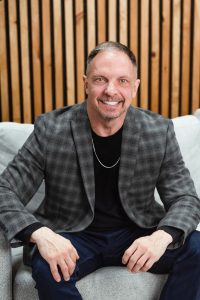
What does a typical day look like for you?
I usually wake up around 4 or 5 a.m. Health, fitness, and mindset are non-negotiables for me-if you’re not operating at your physical and mental best, you can’t deliver on your purpose. That starts with sleep. I don’t use an alarm clock because I believe in waking naturally-when your body completes its cycle, you wake up sharper and more focused. I’m usually asleep by 8 or 9 p.m. so that I can wake up early.
I avoid tech for the first 30 minutes of the day. No phones, no social media. I start with affirmations, which I generate using AI the night before. I read them out loud in the mirror-it’s grounding. Then I head to my office, meditate, journal, and hit the gym by 5:30 or 6:00 a.m. My workouts are about an hour, followed by either an ice bath or cryotherapy, then 30 minutes in an infrared sauna.
After that, I plan my day. From 8 to 10 a.m., I enter a deep “flow state”-no tech, just pencil and paper. I get more done in those two hours than most people do all day. This morning, for example, I wrote a full campaign and five blog posts.
Late morning is for podcasts or meetings, client calls over lunch, and organizational meetings in the afternoon. I usually wrap up by 6 p.m., then evaluate the day and plan ahead using AI tools.
In the evening, I might do hyperbaric oxygen therapy, ozone treatments, or NAD IVs for recovery. I’m home around 7 p.m., wind down with dinner, some reading, and sleep prep using delta wave frequencies and affirmations before calling it a night.
Which emerging trends in cybersecurity most excite you? Are there any new technologies or shifts that you believe are shaping the future of the field?
The biggest game-changer right now is Artificial Intelligence. It’s transforming cybersecurity on both sides-how we defend and how attackers operate. But AI is still a tool. It can mimic human behavior, but it can’t feel. It doesn’t have emotion, creativity, or empathy. That’s what makes us human. So if we let AI fully replace human interaction, we risk becoming obsolete. That’s a danger I take seriously and actively work to address.
Another fascinating area is digital rights. Ownership of content-data, ideas, knowledge-is becoming blurred. Once something is fed into an AI or shared online, it’s hard to claim it as yours. I’m helping companies figure out how to navigate the ethical and legal dimensions of this. It’s especially tricky when institutions, like universities, ban AI for assignments-not because it’s illegal, but because they’ve decided it’s morally wrong. That kind of inconsistency is worth challenging.
The third trend is the rise of cybercrime as a business. Many cybercriminal groups operate openly in countries where hacking the West isn’t even a crime-China, Russia, Iran, North Korea. These aren’t lone actors; they’re companies with offices, staff, even HR departments. And because there are no extradition treaties, we can’t touch them legally. That’s why educating and preparing organizations is more important than ever-because they will be targeted. It’s no longer a matter of if, but when.
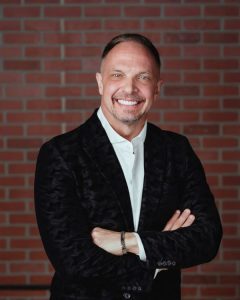
Can you walk us through any particular challenging case that you’ve had and how you handle it? What was your strategy for resolving it?
I work on a lot of expert witness cases, especially around intellectual property. One of the biggest misconceptions in these cases is that intent matters-it doesn’t. A company might independently create a technology, invest millions in R&D, and have no idea a patent exists, but if that patent predates their work, they’re still in violation. That’s always a tough realization for clients who feel they’ve done everything “right.”
Another major challenge is explaining highly technical issues to judges and jurors who aren’t technical at all. I rely heavily on analogies and visuals to bridge that gap. I believe true experts can explain complex ideas simply. One story I always come back to is the Challenger shuttle disaster. It wasn’t until an engineer used a piece of foam and a glass of ice water to demonstrate how the cold made a critical seal brittle that Congress-and the public-really understood what happened. That’s the power of simplifying without oversimplifying.
In data breach cases, another challenge is defining what’s “reasonable.” Security isn’t one-size-fits-all-it varies by company size, industry, revenue, and risk profile. I often serve as an expert on both sides of these cases, so consistency is critical. I need to make sure that if I say a policy was reasonable in one case, I can clearly explain why a similar policy wasn’t in another-based on its elements, not just its existence.
Ultimately, my strategy is to create clear, defensible methodologies in areas where there often aren’t any. That way, my testimony remains consistent, credible, and resilient-even under Daubert scrutiny. It’s all about being meticulous, objective, and able to explain the why behind every opinion.
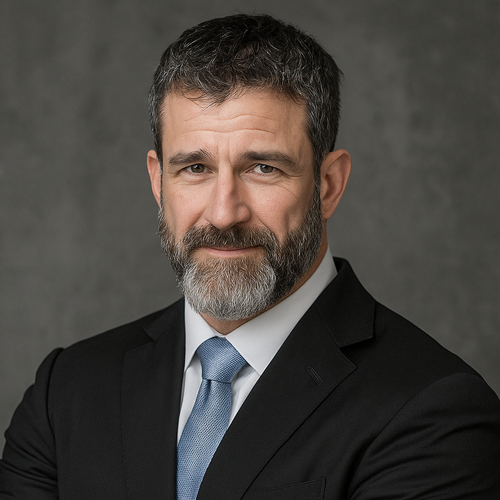
What distinct values do you bring to your clients, especially in high-stake situations?
The biggest value I bring is solutions. A lot of cybersecurity professionals are great at pointing out vulnerabilities-but stop there. That’s like a doctor telling you you’re sick and walking out without offering treatment. My job isn’t just to diagnose problems, it’s to fix them-and fix the root cause, not just the symptoms.
That’s how I approach both cybersecurity and life. I don’t believe in masking issues-whether it’s with painkillers or temporary tech patches. I go deep to uncover what’s actually wrong and design solutions that are sustainable.
I also let data drive decisions, not emotion. Too often, people panic about risks without really understanding them. I help clients evaluate the facts and make informed choices. I’ll never say “you have to fix this.” I’ll say, “Here’s a risk with an 80% chance of costing you $5 million. It’ll cost $300K to fix. You decide.” If they accept the risk because of current priorities, that’s fine. My role is to educate-not to pressure.
Another value I bring is clear communication. I translate cybersecurity risks into business terms. It’s not about “yes” or “no” to a tool or strategy-it’s about understanding: What’s the risk? What’s the reward? Is the risk worth the benefit?
Take Alexa, for example. I didn’t tell people to avoid it. I simply explained the risk-that it’s always listening, often recording, and those recordings can even be used in court. When people understood the exposure, they made their own decisions. That’s what effective cybersecurity is-giving people the insight to act wisely.
In high-stakes environments, clients need clarity, not fear. They need someone who sees the full picture, offers real solutions, and respects their right to make decisions based on facts. That’s what I bring to the table every time.
What are some frequent myths about the field of cybersecurity?
Well, first off-yes, we do wear black. That’s practically the unofficial dress code. But one big myth is that cybersecurity professionals are all introverted, socially awkward nerds who’d rather talk to machines than people. That’s just not true. I call myself one of the fittest geeks on the planet-I hit the gym, eat clean, and wear tailored clothes. People are often surprised when they find out I’m in cybersecurity because I don’t “look the part.” But that’s the point-there is no one look. We’re not all hoodie-wearing loners hunched over a keyboard.
Another myth? That cybersecurity experts only speak in tech jargon. A lot of CEOs dread security meetings because they expect 30-slide decks full of binary and acronyms. But good cybersecurity professionals speak business. I can read a P&L, talk EBITDA, and help align security strategies with revenue goals. We’re not just techies-we can be entrepreneurs, communicators, and company builders.
One more misconception is that cybersecurity is all about stopping things-blocking access, slowing systems down, or making life harder for the business. In reality, when done right, cybersecurity is a business enabler. It protects your operations, builds trust, and can actually boost profitability. It’s not about saying “no”-it’s about making smarter, safer “yes” decisions that help companies grow.
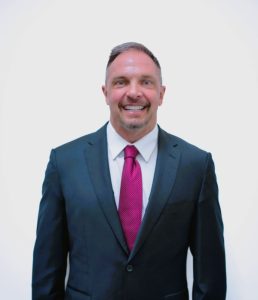
Can you tell us how you and your team continue to innovate and stay ahead in such a fast moving and competitive industry?
It is a simple act: think like the adversary. Even though we’re defenders, we constantly study offensive tactics-how hackers think, how they operate, what motivates them. By understanding their mindset, we can anticipate their moves and build smarter defenses.
Beyond that, we focus on patterns and root causes. While exploits evolve, the fundamentals of how systems get breached haven’t changed. An attacker still needs an exposed IP, an open port, a vulnerable service-it’s always some version of that. So instead of chasing every new tactic, we stay ahead by addressing the core vulnerabilities that make those attacks possible in the first place. If you’re only reacting to symptoms, you’ll always be behind. But if you solve the root issues, you’re leading the game.
Is there a guiding principle or philosophy or quotes that has influenced your life or career and career?
Absolutely-have a plan for your life. I operate on a 15-year plan. I know who I want to be and where I want to be in 15 years, and every day I evaluate whether my actions are moving me closer to that version of myself. If something doesn’t align, I cut it out.
Most people drift through life without direction, wasting time on distractions like social media. Five minutes here and there can add up to hours. At the end of the day, I ask myself: “Did that time make me better? Did it get me closer to my goal? If the answer is no, I stop doing it.”
When you have a clear long-term vision and use it to guide your daily choices, everything becomes more focused, more intentional-and far more fulfilling.
Conclusion
Dr. Eric Cole’s aspirational journey reveals how he rightfully earned his title as an entrepreneur, author, and a true leader. His expertise and passion for cybersecurity highlights his determination to endure and thrive through challenging environments.
Do you have a personal or professional story that can inspire other people into becoming the best version of themselves?
You are welcome to share your journey with our audience.

